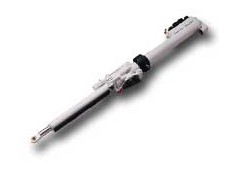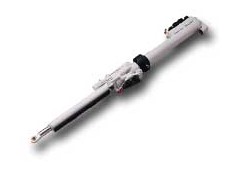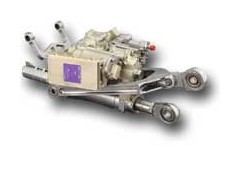


Search
|
Home » Welcome

The Moog Story Over fifty years ago, we started as designer and supplier of aircraft and missile components. Today, our motion control technology enhances performance in a variety of markets and applications, from commercial aircraft cockpits, to power-generation turbines, to Formula One racing, to medical infusion systems. Our culture supports our talented people, allowing them to approach their work with energy, enthusiasm, and the promise of success. Our history begins with our founder, William C. Moog – inventor, entrepreneur and visionary. In 1951, Bill Moog developed the electro-hydraulic servovalve, a device that translates tiny, electrical impulses into precise and powerful movement. In July of 1951, Bill, his brother Arthur, and Lou Geyer, rented a corner of the abandoned Proner Airport in East Aurora and formed the Moog Valve Company. "A Better Way" to Run a Company From experience, Bill knew that work environment played an important role in any Company's success. He had some unique ideas about a "better way" to run a Company -- treating employees with trust and respect. These simple ideas laid the foundation for what would eventually become part of Moog's much-acclaimed work environment and culture. Moog's First Orders The first order for four valves was sold to Bendix Aviation. Larger orders followed from Boeing and Convair. The servovalve revolutionized the aerospace industry and led to the creation of Moog Inc. By 1954, Moog valves were standard equipment on about half of all US fighter planes and more than 70% of all guided missiles. The introduction of the industrial valve was a success, and by 1960 total sales had grown to more than $10 million. In the aerospace arena, in one of our proudest achievements, our engineers designed and manufactured the actuators on the Saturn C-5 rocket that carried Neil Armstrong to his historic first step on the moon in July 1969. 1970s through 1990s: Continued Growth During the 1970s, we entered the growing market for injection and blow molding process controls. More involvement in the US space program led to the award of a contract to supply hardware on the Space Shuttle. The Shuttle flew for the first time in 1981 utilizing the first application of our groundbreaking "Fly-by-Wire" technology. In 1988, Robert T. Brady, Aircraft Group President, was named CEO. Sales at the end of the decade reached $282 million. By the mid-1990s operations were established in India. Our first large acquisition, a purchase from Allied Signal, was the Torrance, California Aircraft Operation. By the end of 1999, revenues grew to more than $630 million. Recent Successes 2001 brought a $50 million dollar Space Shuttle refurbishment contract and Moog stock moved from the American to the New York Stock Exchange. We were named designer and supplier for the flight control systems for the Lockheed F-35 production aircraft and provider of the primary flight controls for Boeing’s 787 Dreamliner program. In 2004 our revenues broke the $900 million revenue mark with another large acquisition, Litton Poly-Scientific, renamed Moog Components Group. For the first time, our fiscal year sales were over 1 billion dollars. Moog: An Innovative Environment Bill Moog's sense of innovation went far beyond product design. From the very beginning, Bill believed that work should be a special place. He believed that people would be more creative, committed, and productive in a work environment wher they felt trusted, respected and rewarded. This set of ideas came to be known as the Moog Philosophy. It is a set of principles that guides our Company even today. "Work can be a more rewarding and satisfying experience for everyone in an atmosphere of mutual trust and confidence." In our 2006 Annual Report, Bob Brady wrote, "The most important attribute of our Company, though, is the culture that unites and motivates our people. It’s a culture that's founded on integrity, honesty, and mutual trust. It values competence, extraordinary effort, individual responsibility, collaborative relationships, and open communications. It's what attracts the best people to our Company and it’s the reason that the best people stay. In this environment they're able to do their best work. Customers, who know our people, know that they will make every effort to deliver on our commitments. If a man or woman from Moog makes a promise, our Company will keep that promise." What other companies are now just discovering, we have known all along -- that people work best in an environment wher they feel valued, involved and empowered. As Bill Moog once said, "We believe in the people who work here.... havin trust and confidence in our people is the only way we know." Moog is a highly successful Company built upon a community of hardworking, talented and dedicated people. In the fall of 1997, Bill Moog passed away. In a tribute to Bill shortly after his death, Bob Brady, Chairman and CEO, had this to say about our Company: "Every day an extraordinary group of people come together to devote their time and energy to build the best product of its type built anywher in the world...and to deliver that product to the most demanding customers in the world. "Those customers can be assured that the product bearing Bill's name is the best product that mankind can make...and it will be better next month, and better next year. This is our lasting tribute to Bill." We think that says it all. [Detailed introduction] |



